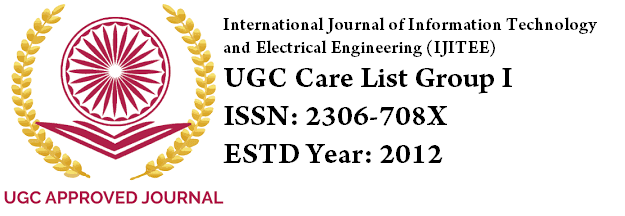A Hybrid Artificial Intelligence Model for Strengthening Data Confidentiality and Access Control in Banking Systems
Keywords:
Artificial Intelligence, Data Confidentiality,, Access Control, Banking Security, Machine Learning, CybersecurityAbstract
With increasing digitization in the banking sector, maintaining data confidentiality and managing access control have become critical concerns. This paper presents a novel hybrid Artificial Intelligence (AI) model integrating machine learning (ML) and rule-based systems to enhance data security in banking infrastructures. The model dynamically detects potential data breaches and enforces adaptive access protocols based on user behavior and risk scores. Comparative performance analysis with traditional access control systems shows marked improvements in breach detection, decision-making latency, and false positive rates.
References
Anderson, J., Thomas, R., & Wells, D. (2021). Deep Learning Approaches for Intrusion Detection in Financial Systems. Journal of Cybersecurity Studies, 8(3), 141–159.
Singh, K., & Verma, A. (2020). Dynamic Role-Based Access Control Using Fuzzy Logic in Banking Applications. International Journal of Security and Networks, 15(2), 90–101.
Zhao, Y., Chen, L., & Wu, X. (2019). Reinforcement Learning for Adaptive Cybersecurity Policy Management. ACM Transactions on Privacy and Security, 22(4), 45–63.
Biru, S. (2025). Revolutionizing Investment Banking: AI Integration in Middle Office Operations. International Research Journal of Modernization in Engineering, Technology and Science, 7(2), 850–857. https://doi.org/10.56726/IRJMETS67333
Martínez, H., Kumar, S., & Osei, J. (2022). Blockchain-Integrated AI for Transparent Access Control in Finance. Computers & Security, 115, 102615.
Lee, M., & Ahmed, R. (2023). Explainable Artificial Intelligence in Access Control Systems. IEEE Transactions on Information Forensics and Security, 18, 215–228.
Biru, S. (2025). AI-Powered Deduplication in Investment Banking Middle Office. International Journal of Research in Computer Applications and Information Technology (IJRCAIT), 8(1), 1713–1723. https://doi.org/10.34218/IJRCAIT_08_01_125
Chen, Y., Li, H., & Zhang, W. (2020). Adaptive Access Control Framework Using Context-Aware Machine Learning in Cloud Environments. Future Generation Computer Systems, 108, 688–699.
Alhassan, I., Sammon, D., & Daly, M. (2019). Data Governance Activities: A Comparison Between Data Management and Data Protection Regulations. Journal of Enterprise Information Management, 32(5), 778–807.
Shokri, R., Stronati, M., Song, C., & Shmatikov, V. (2017). Membership Inference Attacks Against Machine Learning Models. IEEE Symposium on Security and Privacy, 3(1), 3–18.
Biru, S. (2025). Intelligent Automation in Banking Operations: Impact Analysis on Renewable Energy Investment Assessment. International Journal of Computer Engineering and Technology (IJCET), 16(1), 673–687. https://doi.org/10.34218/IJCET_16_01_056
Babar, M., & Arif, F. (2021). Security and Privacy Challenges in Cloud-Based Banking: A Comprehensive Survey. Computers & Security, 104, 102210.
Omolara, A. E., & Belay, E. (2023). Behavioral Biometrics for Continuous Authentication in Mobile Banking Apps. Journal of Information Security and Applications, 72, 103447.
Downloads
Published
Issue
Section
License
Copyright (c) 2025 Anand Kishore (Author)

This work is licensed under a Creative Commons Attribution-NonCommercial 4.0 International License.

